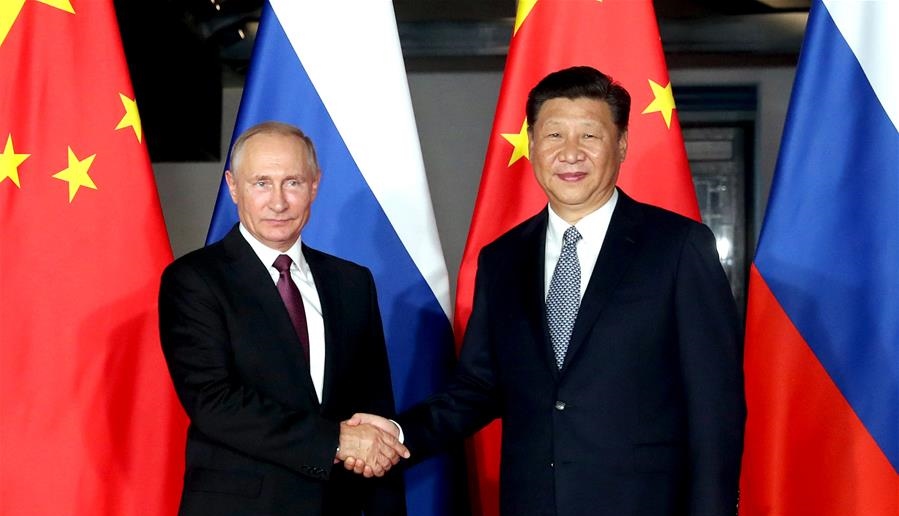Stronger Russia-China ties
January 3, 2018 | Expert Insights

A new section of the Eastern Siberia–Pacific Ocean (ESPO) has become functional in 2018. This will mean that Russia will double its crude oil export capacity to China. It will continue being the region’s main supplier of crude oil for the foreseeable future. China's annual imports of Russian crude oil will rise from 15 million to 30 million tonnes annually due to this pipeline.
Background
China and Russia have had a somewhat tumultuous past. From former allies to bitter rivals throughout the 60s and 70s despite both being led by communist governments and finally back to allies again in the 90s. Both nations, despite not having a great deal in common culturally, nonetheless find themselves politically in agreement on a large number of key issues on the global stage, often offering a viewpoint that is opposed to those offered by their American or European contemporaries.
While there is a great deal of political good will between the two nations, that has not yet translated into strong economic ties, with Russia only accounting for around 1.8% of China’s global exports and Russian goods, primarily energy, making up only 2% of China’s imports from Russia. However, with Russia’s participation in the One Belt, One Road mega-project that is being spearheaded by China, there is a chance that the warm political relations between the two may soon be backed up by a vastly increased amount of bi-lateral trade.
China and Russia are already coordinating on many aspects of foreign policy, such as supporting the Asad regime in Syria, criticizing the handling of the Korean Peninsula crisis by the United States and, most recently, the U.S. decision to recognize Jerusalem as the capital of Israel. As both are permanent members of the United Nations Security Council, combined they have a great deal of power when it comes to organizing or preventing any action by the international community.
Russian oil
Russia has an upper-middle income mixed economy with state ownership in strategic areas of the economy. Market reforms in the 1990s privatized much of Russian industry and agriculture. Some estimates note that Russia contains over 30 percent of the world's natural resources. Russia has an abundance of oil, natural gas and precious metals, which make up a major share of Russia's exports.
Eastern Siberia–Pacific Ocean oil pipeline
The Eastern Siberia–Pacific Ocean oil pipeline is a pipeline system for exporting Russian crude oil to the Asia-Pacific markets (Japan, China and Korea). The pipeline is built and operated by Russian pipeline company Transneft. In June 2009, Russia and China signed a deal to build the spur pipeline to China by which Russia supplies China with 15 million tonnes of oil (300,000 barrels per day (48,000 m3/d)) each year for 20 years in exchange for a loan worth US$25 billion to Russian companies Transneft and Rosneft for pipeline and oil fields development.

Analysis
A new section of the Eastern Siberia–Pacific Ocean (ESPO) has become functional in 2018. This will mean that Russia will double its crude oil export capacity to China. It will continue being the region’s main supplier of crude oil for the foreseeable future. China's annual imports of Russian crude oil will rise from 15 million to 30 million tonnes annually due to this pipeline. Construction of the second line from Mohe, which borders Russia, to the city of Daqing in northeast China's Heilongjiang Province began in August 2016. The line passes north China's Inner Mongolia Autonomous Region.
China is currently the world’s biggest buyer. In 2017, Russia replaced Saudi Arabia as the top crude supplier to China. The project is intended to deepen energy cooperation between the countries and serve the China-proposed Belt and Road Initiative, according to Xinhua. Around 110 million tons of oil have passed through the first line so far.
Assessment
Our assessment is that the current project will further strengthen ties between China and Russia. It will also improve cooperation when it comes to the One Belt One Road project. The increased cooperation between China and Russia points to a new world order.








Comments